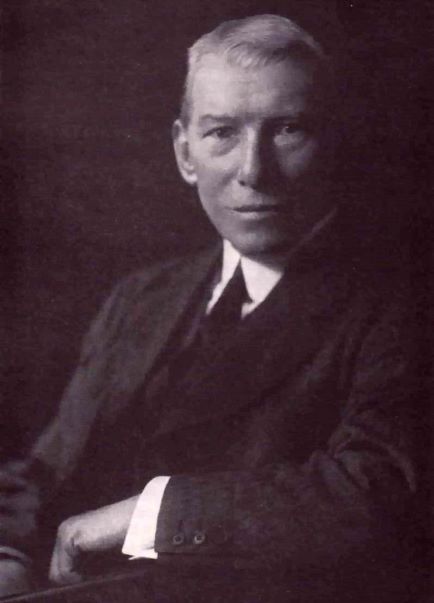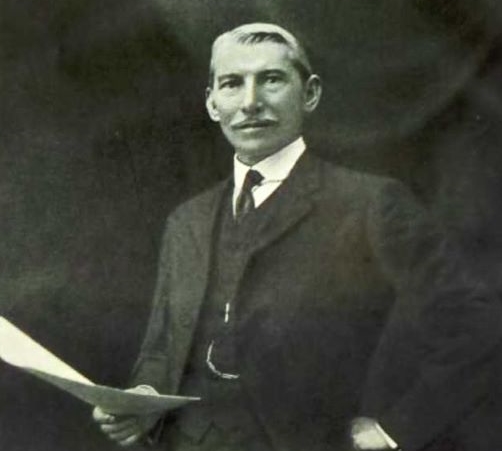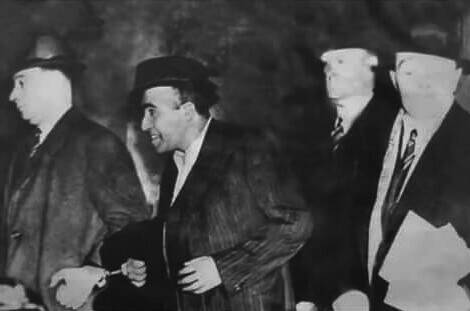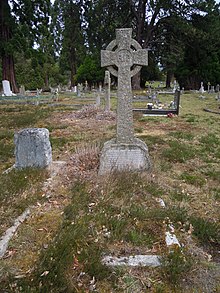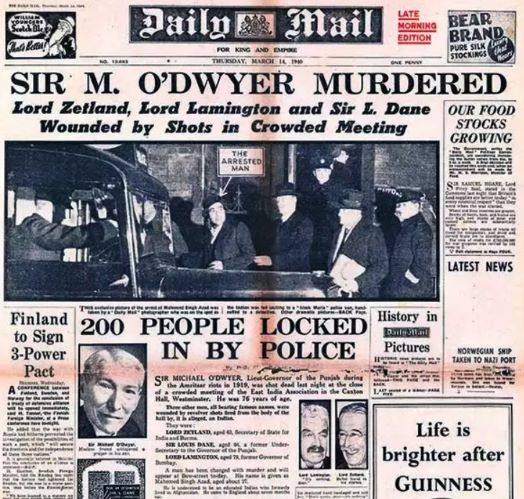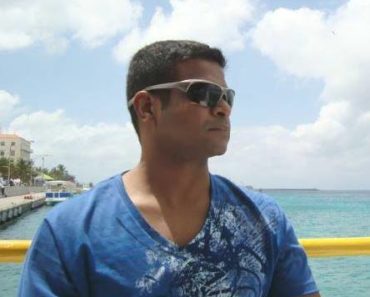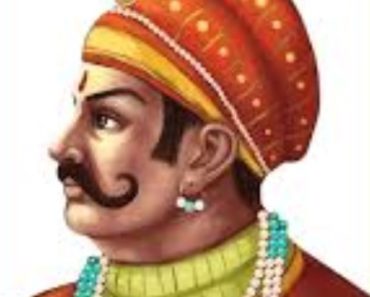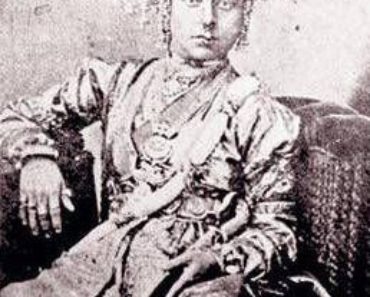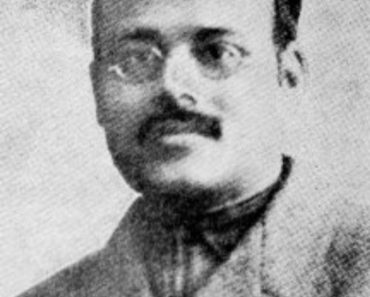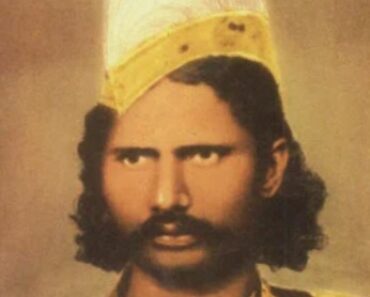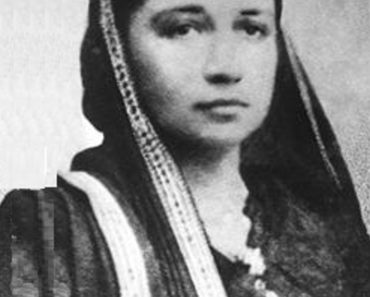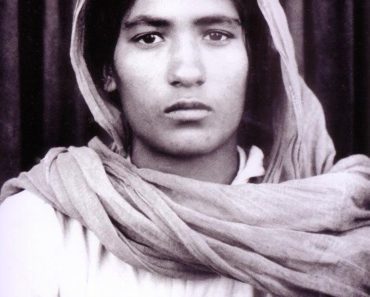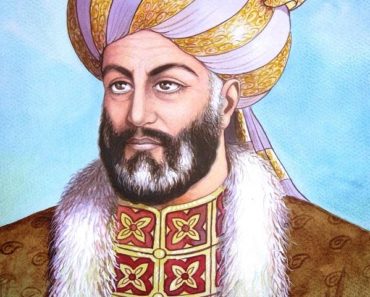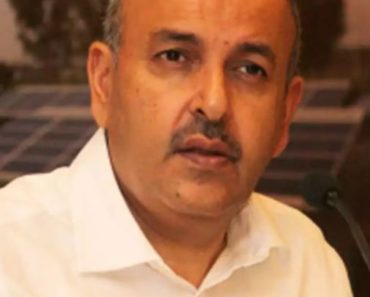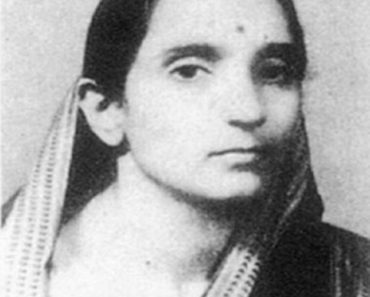Michael O’Dwyer was an Irish Indian colonial administrator and Indian Civil Service (ICS) officer. From 1913 t 1919, he served as the Lieutenant Governor of Punjab, British India. The Jallianwala Bagh massacre on 13 April 1919 occurred in Amritsar during his tenure as the Lieutenant Governor of Punjab. This massacre led to the rise of the Indian independence movement in India. Reginald Dyer ordered his army men to shoot the innocent people gathered at Jallianwala Bagh on 13 April 1919, and Michael O’Dwyer supported Reginald Dyer for his actions. Soon after the massacre, martial law in Punjab was administered by Michael O’Dwyer. In 1925, he released a book titled ‘India as I Knew It’ in which he stated that Punjab was preoccupied with political and terrorism agitation during his tenure as the Lieutenant Governor of Punjab. Michael O’Dwyer was assassinated by Indian revolutionary freedom fighter ‘Udham Singh‘ on 13 March 1940 as revenge for the Jallianwala Bagh massacre.
Contents
Wiki/Biography
Michael O’Dwyer was born on Thursday, 28 April 1864 (age 75 years; at the time of death) in Barronstown, Limerick Junction, County Tipperary, Ireland. His zodiac sign was Taurus. He received his initial school education from Saint Stanislaus College, Rahan, County Offaly. Later, Michael O’Dwyer went to Mr Wren’s Educational Crammer School in Powis Square, London to pursue his high school education. (“Obituary”. Journal of the Royal Central Asian Society published by P. M. Sykes on 1 April 1940). Michael O’Dwyer then went to Balliol College, Oxford to complete two years of IAS probation. (“O’Dwyer, Sir Michael Francis (1864–1940)” – a journal published in 2004 by Philip Woods)
Family
Parents & Siblings
Michael O’Dwyer’s father’s name is John, who was a landowner of Barronstown, Solohead. His mother’s name is Margaret (née Quirke) O’Dwyer. He was the sixth child among the fourteen siblings.
Wife & Children
Michael O’Dwyer got married to Una O’Dwyer on 21 November 1896. Una Eunice was the daughter of Antoine Bord of Castres, France. The couple had two children, a daughter named Una Mary O’Dwyer, and a son.
Early Life
His family never supported the nationalism movement and the Young Ireland movement in Ireland. Michael O’Dwyer cleared the entrance exam of the Indian Civil Service in 1882. Soon, he was enrolled at Balliol College, Oxford to complete his two years of probation. Michael O’Dwyer cleared the final examination of the Indian Civil Service in 1884 in which he secured the fourth rank. The Indian Civil Service examination was considered a highly competitive exam at that time, and it was not an easy task to clear the examination. Michael O’Dwyer was highly inspired by the works and reputation of Lord Lawrence, the first British civil administrator of India. During his college studies, O’Dwyer passed his final year of examination in the first division in jurisprudence. Philip Woodruff, who was an author and a lawyer, mentioned the family background of Michael O’Dwyer in one of his writings. Philip Woodruff wrote,
Michael O’Dwyer was one of the fourteen children of an unknown Irish land-owner of no great wealth, as much farmer as landlord. He was brought up in a world of hunting and snipe-shooting, of threatening letters and houghed cattle, where you were for the Government or against it, where you passed every day the results of lawlessness in the blackened walls of empty houses. It was a world very different from the mild and ordered life of southern England… One gets the impression [of O’Dwyer when at Balliol] of a man who seldom opened a book without a purpose, whose keen hard brain acquired quickly and did not forget but had little time for subtleties.”
Career
In 1885, soon after becoming an IAS officer, Michael O’Dwyer moved to India. He was given the charge of the inland revenue settlement work at Shahpur in Punjab during his first posting as an administrator. He was appointed in the Alwar and Bharatpur provinces of Punjab in 1896 as the director of the land records and agriculture. He then went on a Europe and Russia tour for the next one and a half years. In 1898, the formation of the new North-West Frontier Province was announced by Lord Curzon, and Michael O’Dwyer was chosen by him for its separation from Punjab. In 1908, he was designated as the revenue commissioner of Punjab and served in this position till 1908. From 1908 to 1909, he was a resident of Hyderabad. In 1910, he was appointed as the agent to the governor-general in Central India, and he served this role till 1912. Later, in December 1912, he was designated as the Lieutenant Governor of Punjab. During this time, Lord Hardinge of Penshurst was the Viceroy of India. In May 1913, he was honoured as a Knight Commander of the Order of the Star of India. When Michael O’Dwyer was honoured with this order, the Viceroy Penshurst commented,
Punjab was the Province about which the Government were then the most concerned; that there was much inflammable material lying about; which required very careful handling if an explosion was to be avoided.”
Building an Army in Punjab During the First World War
When Michael O’Dwyer was appointed as the Lieutenant Governor of Punjab, he began establishing an army of Indian soldiers after the announcement of the First World War. To build this force, he organised a centralised system with the help of some local Punjabi leaders and military men, and he promised the recruited soldiers that he would provide them pieces of land and formal titles as rewards. This proposal induced several Punjabi people to join his army, and consequently, various families in Punjab started complaining that these children were the only bread earners in their homes. These soldiers and their families wished for a better life and recognition after the end of the war. These mutual agreements between military and local Punjabi leaders were narrated as the foundations of the bureaucracy in Punjab by the historian Tan Tai Yong. Yong described it as,
The foundations of a militarized bureaucracy in colonial Punjab.”
Michael O’Dwyer became successful in recruiting more than 360,000 soldiers from Punjab state. This number was more than half of the total recruitments from all across India. Soon, for his efforts and endeavours during the First World War in recruiting soldiers in Punjab, he was honoured with the Knight Grand Cross of the Order of the Indian Empire, and during this time, Lord Chelmsford was the Viceroy of India, and Home Rule Movements were also started flourishing in some states of India.
The 1915 Defence of India Act
Michael O’Dwyer played a crucial role in passing the 1915 Defence of India Act by the British Government in India. He was one of the administrators of British India who was granted some crucial authoritative ruling powers after the passing of the 1915 Defence Act. This act was officially passed on 18 March 1915. This act gave the powers to the British government to stop and curtail the revolutionary and nationalist activities in India during and after the First World War. It was implemented as an emergency criminal law, which was passed by the Governor-General of India in 1915. During the same time, the British government started encouraging the self-governing institutions under the Montagu–Chelmsford Reforms, which were opposed by Michael O’Dwyer. These reforms were supposed to spoil the powers and efforts of Michael O’Dwyer that he put in recruiting the soldiers with the help of Punjabi leaders as these reforms focused to increase the powers of the urban elites.
Jallianwala Bagh Massacre
A special CID team in Amritsar was ordered to arrest two Indian revolutionaries Saifuddin Kitchlew (a Muslim barrister) and Dr Satyapal (a Hindu physician) in March 1919 by Michael O’Dwyer. These revolutionaries were inspired by the non-cooperation movement of Mahatma Gandhi. The British police arrested these two revolutionaries on 10 April 1919. They were called to the house of Miles Irving, a Deputy Commissioner in the Civil Lines. Soon, they were transported secretly to Dharamshala in the Himalayas region and were kept under house arrest. Soon, the news of their arrest and escort spread like fire in the Punjab region, and the protesters started gathering outside the house of Miles Irving to raise their voices against the illegal detention of the two revolutionaries. These protests ended up in violent riots. Consequently, the protesters decided to organise a peaceful gathering at Jallianwala Bagh on 13 April 1919 as a protest against the detentions. Michael O’Dwyer was working as the Lieutenant Governor of Punjab when a meeting was organised by local Punjabis at Jallianwala Bagh on 13 April 1919, and the massacre occurred in Amritsar after three days of violent riots. Later, the British government estimated the casualties and stated in its records that Brigadier-General Reginald Dyer was the commanding officer, who ordered Gurkha troops to fire on more than 379 unarmed civilians gathered at the Jallianwala Bagh. More than 1500 casualties were estimated by various renowned media houses. On the next day of the massacre, on 14 April 1919, at 3 AM, Michael O’Dwyer was reported about the incident, and he instantly sent a telegram to Brigadier-General Reginald Dyer in which he mentioned the actions of Dyer as correct. Michael O’Dwyer wrote,
Your action is correct and the lieutenant-governor approves.”
Supporting Brigadier-General Reginald Dyer
Later, Michael O’Dwyer supported the actions of Reginald Dyer and other British military officials who were involved in the massacre. All these situations persuaded Michael O’Dwyer to implement Martial Law in Punjab on 15 April 1919, and this law backdated to 30 March 1919. The Jallianwala Bagh incident led to the rise in the Indian independence movement. This movement was started by Mahatma Gandhi. On 21 April 1919, Michael O’Dwyer supported the steps of Reginald Dyer in a public meeting. He stated,
The Amritsar business cleared the air, and if there was to be holocaust anywhere, and one regrets that there should be, it was best at Amritsar.”
He further justified that the organisation of public meetings were illegal and was regarded as a part of the conspiracy against colonial rule in India. Michael O’Dwyer added, while supporting Dyer, that it was a coincidence that the Jallianwala Bagh incident occurred when the rumours of the Afghan invasion were spread all across the globe. Meanwhile, the implementation of Martial Law in India was prohibited by the British government, but it was already imposed by Michael O’Dwyer in Punjab. Michael O’Dwyer stated that he would not uplift the martial law in Punjab and was ready to bear its consequences. During the same time, Michael O’Dwyer was held responsible and guilty of the killings of dozens of women, men, and children when he ordered to throw bombs at them from an aeroplane during the riots in Gujranwala.
Dismissal of Michael O’Dwyer
At Scarborough, the opposition Labour Party Conference passed a resolution on 24 June 1920 to dismiss Michael O’Dwyer from his position along with Chelmsford for their cruel actions in Amritsar. They also demanded their court trials and the abolition of the Rowlatt Act. During this conference, a standing tribute was paid to the innocent deceased civilians of the Jallianwala Bagh massacre by all the delegates. Punjab was in such a disturbing position at that time that the British government decided to dismiss Michael O’Dwyer from his position.
Court Trials
The court proceedings against Michael O’Dwyer started before Justice McCardie in the Court of King’s Bench in London on 30 April 1924 under the Jallianwala Bagh massacre case charges. These trials carried over for more than five weeks. Reportedly, Michael O’Dwyer kept on justifying the actions of Reginald Dyer during the entire court proceedings.
Literary Works
Several books, articles, and journals were published by Michael O’Dwyer after he was relieved from his position in 1920. “Border Countries of the Punjab Himalaya: Discussion” in The Geographical Journal, and “Races and Religions in the Punjab” in the Journal of the Royal Society of Arts, London, were the two journals issued by Michael O’Dwyer. In 1925, he released the book titled India as I knew it. London: Constable & Company in which he mentioned that the Punjab state was full of terrorist activities and political agitation when he was appointed as an administrator in the state. In 1933, he published the book titled The O’Dwyers of Kilnamanagh: The History of an Irish Sept, and in this book, he mentioned the misfortune of his family, which ruled some areas of Thurles since the Pre-Norman era, and when, in the seventeenth century, Cromwellians captured Ireland, his family renounced its possessions and big palaces. In 1938, he published a book titled Fusion of Anglo-Norman and Gael. Apart from books and journals, Michael O’Dwyer wrote several articles for The Times newspaper in which he used to criticise the non-cooperation movement of Mahatma Gandhi and supported colonial rule in India.
Death
An Indian revolutionary Udham Singh assassinated Michael O’Dwyer on 13 March 1940 at the age of seventy-five when O’Dwyer went to attend a joint meeting of the East India Association and the Central Asian Society (now Royal Society for Asian Affairs) in Caxton Hall in Westminster, London. Two bullets hit him, and he died on the spot. The gunshots also wounded Lord Zetland, the Secretary of State for India. The British police immediately arrested Udham Singh as he did not try to escape. During the court proceedings, Udham Singh said that he took revenge for the Jallianwala massacre and had grudges against Michael O’Dwyer. Singh described,
I did it because I had a grudge against him. He deserved it. He was the real culprit. He wanted to crush the spirit of my people, so I have crushed him. For full 21 years, I have been trying to wreak vengeance. I am happy that I have done the job. I am not scared of death. I am dying for my country. I have seen my people starving in India under the British rule. I have protested against this, it was my duty. What a greater honour could be bestowed on me than death for the sake of my motherland?”
Later, Lord Zetland resigned from the post of the Secretary of State for India and took early retirement; Leo Amery succeeded him.
Facts/Trivia
- His full name was Sir Michael Francis O’Dwyer. [1]Hindustan Times
- In 1882, the home of Michael O’Dwyer was burned by the nationalist of Ireland. The next year, his father suffered a heart attack and died. Two siblings of Michael worked in India, and his other two siblings became popular Jesuit priests.
- The theory behind the Jallianwala Bagh massacre was described by the historians Pearay Mohan and Raja Ram as,
One of a “premeditated plan” conspired by O’Dwyer and others, including a young Punjabi youth Hans Raj.”
But, the other noted historians such as Nick Lloyd, K. L. Tuteja, Anita Anand (journalist), and Kim A. Wagner narrated that this theory has no evidence, and they also cited that Hans Raj was only an agitator.
- After his assassination, O’Dwyer was buried in Brookwood Cemetery, near Woking in England.
- In a paper, ‘New light on Jallianwalla Bagh’, a noted historian K K Khullar, wrote,
The massacre was not an isolated event but an important link in the chain of incidents before and after with the intention of ”unleashing a reign of terror in Punjab.”
Khullar further added that Dyer gave no prior warning to the civilians, and no prior permission was taken by him from the district magistrate of Amritsar. He wrote,
General Dyer gave no warning for the crowd to disperse, he took no permission in writing or otherwise to fire from the district magistrate, Amritsar. In fact, the DM was not even present in the city that day. Also, while martial law was officially proclaimed on April 15, 1919, General Dyer imposed it from April 12 and made no effort to inform the people about it. Moreover, General Dyer sent his report directly to the lieutenant governor in Lahore through a special messenger.”
- The wife of Michael O’Dwyer organised a ‘Lady O’Dwyer’s Punjab Comforts Fund’ during the First World War to help the soldiers who served the Indian Army. This was a charitable fund that focused on collecting money and gifts for them. She was the recipient of the Dame Commander of the Order of the British Empire. His daughter was the Member of the Order of the British Empire honour.
- Sir Sankaran Nair published a book titled Gandhi and Anarchy in 1922, and in this book, he narrated that it was Michael O’Dwyer who was responsible for the tense conditions and atrocities in Punjab when he was appointed as the administrator in Punjab. Sankaran Nair wrote,
Before the reforms it was in the power of the Lieutenant-Governor, a single individual, to commit the atrocities in the Punjab which we know only too well.”
Michael O’Dwyer lodged a defamation suit against Sir Sankaran Nair in a response to Sankaran Nair’s comments in his book. As a result, on court orders, Nair paid £500 damages to Michael O’Dwyer.
- On 4 September 1920, a 12-point charge sheet against Michael O’Dwyer was issued by Lala Lajpat Rai in which he mentioned that Michael O’Dwyer was the real villain of the Jallianwalla Bagh massacre. Lala Lajpat Rai stated,
Indeed I may venture to assert that no man in India has done such a great disservice to the British empire and brought such a disgrace on the good name of the British nation as Sir Michael O’ Dwyer.”
- A day after the assassination of Michael O’Dwyer, various noted newspapers and daily mails started publishing articles on him. On 14 March 1940, Liverpool Daily Post wrote,
Sir Michael O’Dwyer Amritsar affair recalled’. “Sir Michael, who was seventy-five, was an Irishman, and one of the most outstanding men in Indian Administration. During his term of office as lieutenant-governor of the Punjab, there occurred the Amritsar affair, of April 13, 1919, which marked one of the most difficult periods in Indian affairs of those times.”
- Michael O’Dwyer was a fine horse-rider and an accomplished tennis player. According to his comrades, he was a fearless rider who had a keen eye for horses.
- According to Michael O’Dwyer, there was no such thing as an Indian nation. Major General Sir William Beynon stated in one of his writings that Michael O’Dwyer opposed the changing administration form in India on many occasions after his retirement from the post of lieutenant-governor of Punjab. Beynon wrote,
Since his retirement from the post of lieutenant-governor of Punjab, Sir Michael had on many occasions bitterly opposed the changing form of administration in India. In 1934, he said that a democratic constitution in India would be a sham. There was no such thing as an Indian nation. The word India was unknown there.”
- Michael O’Dwyer was portrayed by Dave Anderson in the 2000 Bollywood film Shaheed Udham Singh. He was portrayed by Shaun Scott in the 2021 Bollywood film Sardar Udham.
References
| ↑1 | Hindustan Times |
|---|

